The following feature appeared in 2003: A Year Magazine. (We ran a feature from 1991 last year.) The issue is now available for purchase on 2003magazine.com, along with a QS hat we produced in collaboration with 2003 to commemorate the northeast blackout of 2003 — the day the T.F. was dubbed the safest place on earth.
Skateboarding was maturing in the late ’90s and early 2000s. Videos went from handycam promos to hour-long blockbusters with pro-level production values, skaters were padding their pockets with royalty checks from sponsors that were fatter than ever, and prodigious 15-year-olds were outshining the grown-ups with tricks that were unimaginable in the early 90s.
Except in New York, where skateboarding was still synonymous with chilling, of a lifestyle without an end goal. After 9/11, it felt even further removed from what was happening in the skate industry at large. The spots throughout Lower Manhattan became either desolate or off-limits, which made chilling (instead of missioning into the outer boroughs) that much more appealing.
But being New York, there was, of course, an exception. Vicious Cycle, released in 2004, was a video made throughout those years that upended the attitude associated with New York. Filmed by R.B. Umali and Doug Brown for Zoo York from 2002 to 2004, it was the first video to emerge from a crew of skaters living in New York who refused to accept what was becoming the status quo for a city that dominated in most other areas of culture. The result was very much up to par with anything coming out of California or elsewhere.
In 2003, Bassett and other skaters involved in the making of the video cohabited a windowless apartment in Lower Manhattan. This is the story of the Vicious Cycle house.
Where are you from and how did you end up in New York?
I grew up in Chatham, Massachusetts, which is in Cape Cod. I started skating there, met people, and then started going to Boston a lot. From there, I started getting hooked up with Zoo stuff from Jeff Pang, and would go out to New York to visit those dudes. I went back a few times, and then on my 18th birthday, I moved to New York. That was in November of 2002.
Were you getting paid to skate at that point?
Zoo paid for the house that I moved into, but I wasn’t getting paid.
How did the house come together?
The house was on Broadway and Fulton Street. I wanted to move to the city, so I talked Zoo into getting a house for me, Brian Brown, and Billy Rohan at the time. Billy eventually moved out, and Brian’s brother, Doug, moved in. He was the main one filming us back then. Lou [Sarowsky] would stay over a lot, too. People would always come to town and crash, whoever was around skating.
Did sponsors house riders back then?
I’m sure it happens, but I don’t think it’s common. We definitely had to do a little weaseling to make it happen. I wasn’t getting paychecks at the time, so I think we leveraged that into getting them to pay for the house, so it’s easy for us to skate and film for Zoo. The girl [Giovanni] Reda was dating at that time, her father had that space and it wasn’t zoned for residential living. It was a commercial space, so we were kinda not supposed to be there. Every few months, someone would come by and be like, “What’s going on in here?” and we’d just lie our way out of it. I don’t remember what we were telling them, though.
What was the layout of the house?
There were no windows, just a glass door at the back that faced an alley. No light would come in. You walked in, there was a kitchen area, and then another door. It was railroad style, just a straight shot to the back. It was a big, long straight area with a couch and pool table. To the right, there were three different rooms. My room was first, Brian was in the back, and the middle room would be on rotation. No windows anywhere, though.
It used to be little offices or something, and then somebody built some walls to make the rooms. The rest of the building was residential, except the ground floor, which is where we lived.
We’d sneak onto the roof through the fire escape on these rusted stairs that would sometimes break if you stepped on them. There was one neighbor who would always be naked, which was this older dude, and we’d always be like, “Shit, he’s naked again” while we rushed past his windows.
What was the routine when you guys were living over there?
It was a year after 9/11. The Financial District didn’t have too many people down there. It was a full ghost town.
Even more so than when you would skate down there in the years before 9/11?
It was eerie. There was still white powder, dust, memorials, flowers and candles everywhere. It was empty and creepy. People would come up to the memorials and just start crying. It was so empty. We didn’t even get kicked out of stuff very often. There was so much security everywhere, but with what was going on down there, they didn’t care about skating. It was so big of a shock to everyone that it happened, so nobody was paying attention to us.
Fulton and Broadway is pretty close to Ground Zero. What was the scene like over there? Could you walk up to it?
As soon as you walk out of our door and look down Fulton Street, there was still five stories of wreckage and dust everywhere. Fulton Street lined right up with it. There were massive cleanup crews, and it was all blocked off. It took them so long to get it out of there. Church Street was still completely blocked off.
What was the routine at the house?
We’d go out and skate until the sun came up, come back to the apartment, smoke a bunch of weed, play pool, and then pass out. We’d wake up and never know what time it was. We’d wake up, smoke weed, then go skate again. I think Lou coined it: “This place is like a vicious cycle.” I think once we were done with the video, the name sort of fit.
Would you mainly only skate downtown in those days?
Mainly things around the house — CIA Ledges, the Chase building stairs, just everything.
Was it a full skate house vibe?
People would always crash on the couch. Teams would come through New York and stay with us. We’d play pool games for boards and swap boards out based on who won, then trade them to skate shops or sell them at spots. There was this pizza place a few doors down on Broadway and there was a Portuguese dude who worked there. His son skated and I’d always give him product in exchange for free pizza because his son skated.
What was skating like at this time in New York?
I would mainly skate with whoever was crashing at the house. I didn’t really skate with too many other people. We wouldn’t go up to Tompkins or anything like that. We were still whiling out in these days. We were going out to bars in the Lower East Side, just skating home in pouring rain and shit drunk, but being so psyched on the city.
Was the intention to always make that video or did it just randomly come about?
I had a bunch of footage from traveling to Europe and cross-country trips. Companies would hit me up to do parts for them, but I wanted to keep it together, so we did the video. When we had the house, we knew we were filming for the video. We all kinda had stuff, but as soon as we were living together, the objective became to work on the video.
There was no deadline for the video or anything, though. Everyone would sit with R.B. and look at their parts, so people were really hands-on with the video. It happened naturally.
When you would travel abroad for the video, would you ever get vibed for being Americans based on all that was going on with us?
I remember going to Europe in 2002 and 2003 — Americans were not cool. I don’t remember a particular thing because I was pretty faded on those trips, but people would always have something to say or look at us all dirty. Just little comments here and there. Nothing confrontational, but you could tell people weren’t feeling us.
How did the house end?
Somebody — don’t wanna name any names — blew up the spot. They said the wrong thing and somebody who managed the building was like, “You gotta get out of there.” They redid the whole building a few years later, so I just think they had it out for us. Reda called us, being like, “You guys blew it.”
We were going to Europe again, and everyone had to leave right before. Lou and I would drive around the city throwing couches in random spots. I ended up moving into one of Vinny Ponte’s family’s building on Greenwich and Spring. Brian went upstate. I eventually ended up moving to Brooklyn.
Once I moved out of that zone, the rest of the city was completely normal. It was just the Financial District that felt weird. That whole three years was a construction zone down there, but the rest of the city was fine.



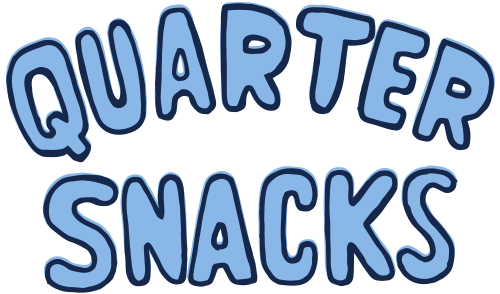


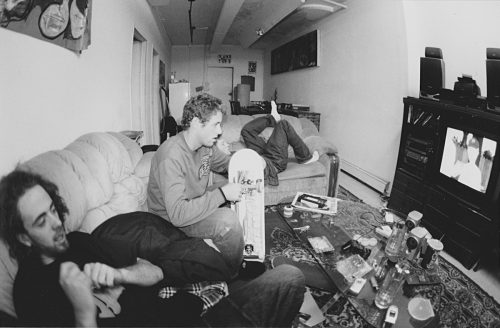
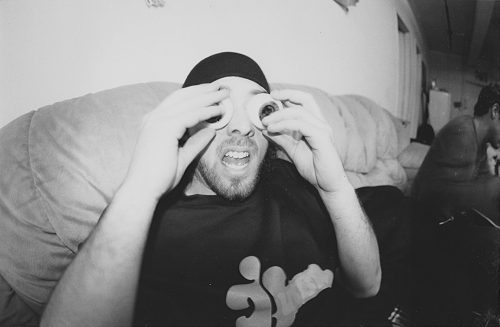
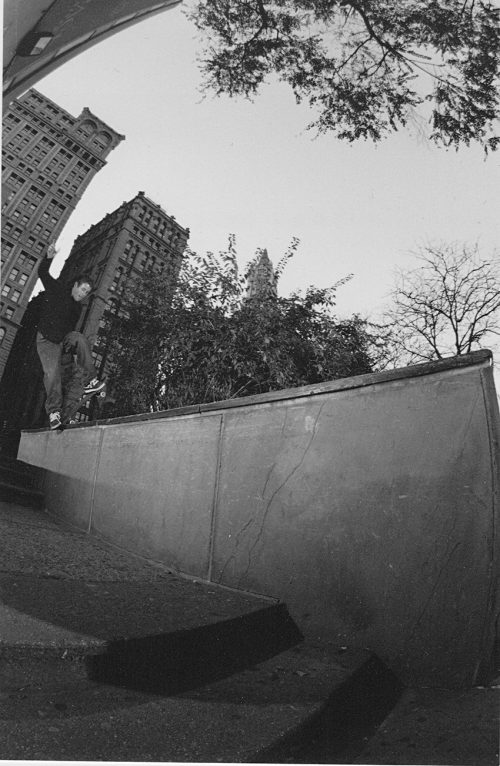
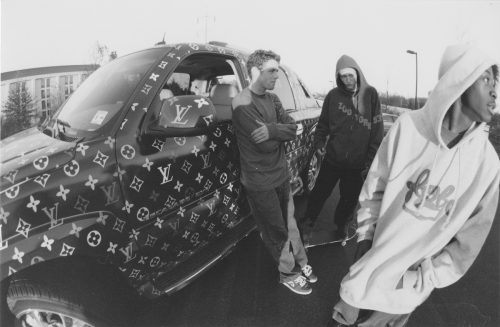
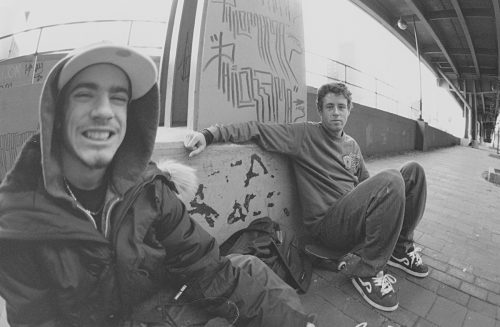
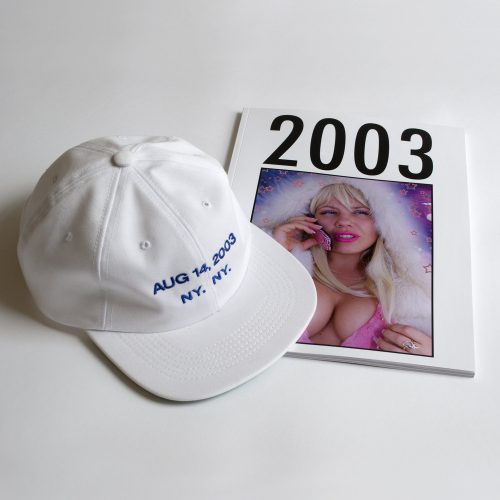
vicious cycle milk crate premiere @ rival
used to watch Ian rieds vid at rival with my mom…